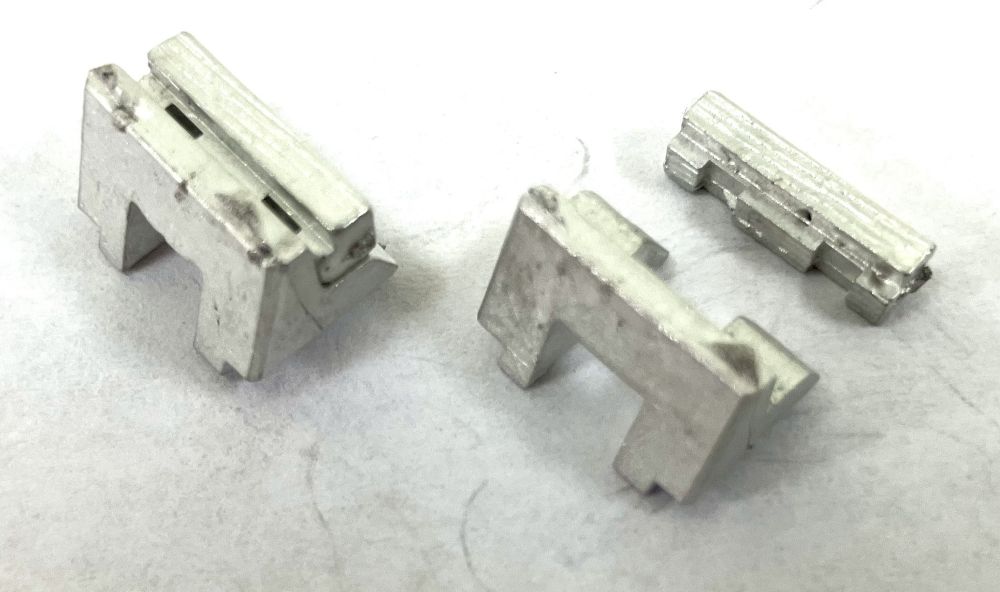Description
SA11 “N” scale CAR FLOAT FITTINGS KIT
Typical Steel Car Float General Details – AND *Car Float Construction
N Scale Car Float Fittings: 47 Piece Total includes: 3 Car Stops (2 pc), 8 manholes-hatches, 8 cleats, 8 double bitts, 4 toggle bar assemblies (16 pcs – 12 toggle pockets, 4 toggle bars), cabin doghouse (2 pcs – 1 cabin, 1 light), 1 life ring and 1 smoke jack. There is no rack on this “N” Scale version.
Toggle bar assembly, SA16, included in this kit, is deck equipment that allows the barge to connect and stay secured to the dock/apron. If you need additional toggle bar assemblies, they are available on our web site.
Car Float operations were used whenever a railroad had to cross a body of water and bridge construction, for whatever reason, was impractical.
Who used RR car floats to move freight? Just to name a few: the NYNH&H, NYC, B&O, WM, ERIE, CP, Cross Harbor RR, PRR. Some RRs used Car Ferries but that’s another Story.
*Car Float Construction
Real Car Floats came in many sizes. I won’t pretend to be an authority on the subject, as there’s just too many variations. I’ve seen pictures of old wood Floats that could just about hold three 40’ cars lengthwise. I assume it was double tracked, therefore holding six cars. Generally speaking, smaller Floats range around 150’ to 180’ then up to the 225’ range, from there to the big league 350’ or more. Unless you are modeling a specific prototype, you can basically custom build your Float to fit available space allowed for on your track plan. Two or three tracks, it’s up to you. Larger Floats generally used three tracks. In prototype practice, if a Float had three tracks, they were brought down to two at the apron (dock). A “Gauntlet” was often used for this purpose. For model RR use, the three tracks could be run straight thru the apron, and turnouts used at the approach to the apron. Your car float can be simply made from a length of pine board, while beveling the edges and removing some materials from the four corners. Finish by attaching the parts from this kit onto the deck/surface. The width of the float would depend on the number of tracks. Generally, they would be around 40’ for three tracks. Freeboard, (how far it sticks out of the water) on a real Float it would depend on how it is loaded. For model, 6’ or 7’, 3/4” or 7/8” would look okay.
You will most likely be laying and gluing your track to the deck of the float. We sell “rail fasteners” on our web site, item number P65
These are specifically made for “N” scale car floats. There are twelve 3” lengths, (36” total), of pewter fasteners per package. They need to be glued to the deck of the car float and the track crimped in place on top of the fasteners.
We have provided a parts photo sheet with part descriptions and ID s. We have also provided a barge and apron/dock drawing detailing where the parts should be located. The P63 life ring, P50 smokestack & P318 lamp should be attached to the P62 cabin. A flag mast, (not included in kit), should be located, centered on the stern of the deck.
The P60 car stops are a two-piece construction. See photo
N Scale application. Review the size to determine if it will meet your requirements
1 kit in package
NOTE: We also offer the Car Float Fittings Kit in HO Scale—Part number: SA10 HO Scale







